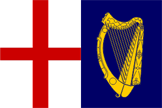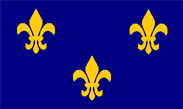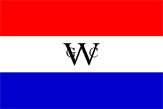human-slaughter
brand new year
stHSNES1: Return to Monkey Island 2
Huge props to Bananalee where I basically stole all this stuff.
Yarr, (I had to say that) welcome to the treacherous seas and lands of the Caribbean. You, whether ye be a pirate a freelancer a landlubber or a government privateer, are setting out upon a journey that be taken you to the far reaches of Terra Firma and to the hundreds of islands inbetween. There you will find, mystery, intrigue, grog and maybe even for ye sissy types. Love.
The rules of the sea and land are listed out below make sure you are well versed in them before doing anything stupid. You hear me landlubber!?
Seamen (Pirate, Government Privateer, Merchant)
The Captain
This is the man/woman who is your persona in the NES. He needs a name, and you need to throw in some stats for him. A typical Captain’s stats would look like this: -
Class: Pirate
Captain Guybrush Threepwood
Player: Human-Slaughter
Stats: -
Leadership – 10
Seamanship – 10
Gunnery – 10
Luck – 10
Leadership is essentially your character’s courage and well… leadership. The higher the number, the greater your ability to inspire undying loyalty in the crew – or to have them give you that one more day to pull off that huge booty you promised them.
Seamanship is also an important point of your Captain. It is this stat which determines whether you can take advantage of that sudden gust to gain on your prey – or causes you to broach to in a storm. Also, your seamanship will dictate whether you can read an opposing Captain’s mind by the way his ship is run.
Gunnery reflects how capable you are in training your crew. If you can set a good example by hitting a target four hundred yards away with a 9-pounder in a gale, your men will certainly want to try their utmost to achieve it. Higher scores in this stat will provide more accurate and greater rates of fire.
Luck plays a big role – yet does not play any role at all. The most ambiguous of the stats, Luck can mean the difference between spotting a lone Spanish Treasure Galleon in the big blue sea or having an enemy cannonball find that hole in your hull and go on into your powder room. Not something you want to have a bad level with.
The Officers
You will need officers in your simply because you’re not going to be awake all day. They can range from pursers to bo’suns to gunners. To simplify things, your officers are generic and perform all those roles to assist the captain. In addition, they also serve to captain additional ships in your fleet, should you capture prizes.
Typically, an officer’s stats will look like this: -
One Eyed Larry – 10/10/10/10
Each of the four numbers represents Leadership, Seamanship, Gunnery and Loyalty respectively. The first three stats are similar to that of a Captain’s.
Loyalty, however will tell you whether this officer will be more likely to defend you when the crew mutters of mutiny or be the one who incites the mutiny against you. Needless to say, having a low loyalty and high leadership is a very dangerous combination.
When more than one officer is on board a ship, the skills of the officer with the higher Gunnery skill will be the one taken into account during battles. Seamanship however will be in the hands of the Captain on board.
You obtain officers either by recruiting them in your ports of call (which is the usual case), or trying to convince captured officers to serve in your crew. Sometimes, officers on captured prizes may offer their services to you.
The Crew
The men who weigh the anchors, trim the sails, holystone the decks, fire the guns et cetera. These are the people who throw in their lot with you in the hopes that they get some nice booty at the end of the voyage. Individual ship crews will have three stats with them listed as such under the ship they work on: -
Crew: 75 (Lukewarm, Good, Lubbers,)
The first stat describes their loyalty towards the main Captain, i.e. you. In addition, the more loyal these men are, the fiercer they will fight in a boarding action. It goes in levels determined by Mr. Dice and yours truly, depending on the obvious things like money, food and all that jazz. The levels of crew loyalty are: -
Mutinous – Lynching – Hateful – Resentful – Tolerating – Lukewarm – Respecting – Admiring – Loving – Worshipping
The second shot describes the typical gunnery capabilities of the crew, both in terms of accuracy and rate-of-fire. This stat can be helped by a commander with good Gunnery skills or made worse by lack of training. Also in levels, they go: -
Hopeless – Pathetic – Pitiful – Embarrassing – Tolerable – Average - Above Par – Good – Excellent – Elite – Crack
Last but not least, their sailing capabilities. You may have a great person in charge but if your crew can’t tell the difference between their halyards and their jibs, you’re in pretty deep trouble. The greater the level in this, the more able your crew is to handle tricky manoeuvres like gybing in a gale. The levels go like so: -
Lubbers – Landsmen – Seamen – Able Seamen – Prime Seamen
Just like officers, crew members are obtained by recruiting in port or pressing members from captured ships. Both have pros and cons. Recruiting members from land would usually mean a lower quality of sailor but higher loyalty. In contrast, those pressed into service from prizes are less likely to be loyal but are usually better sailors.
As a general rule, 10 crewmen will take up 1 ton of cargo space.
The Ship
The heart and soul of a buccaneer’s life, the ship is defined by Daniel Defoe as ‘a light pair of heels being of great use either to take, or to escape being taken’. Like the other things above, ships will be listed under your stats as such: -
Ghost Sail (Ketch)
Commander: Captain Guybrush Threepwood 10/10/10/10
Officers: One-Eyed Larry – 10/10/10/10
Leyland “Landlubbin” Jonson – 5/4/3/8
Crew: 15 (Worshipping, Hopeless, Lubbers)
Guns: 10
Cargo: -*
Food – 2 tons
Goods – 10 tons
Rum – 7 tons
* Cargo will be listed and sent out every turn via PM.
Of course, ships have to have variation. In this NES, fourteen different types of ships ply the Caribbean, all ripe for the picking – or probably hunting you down. The ships are classified into three main categories: sloop-rigs, brig-rigs and ship-rigs, indicating the number of masts the vessel has.
Later on when you gain money and goods and need to upgrade you can do so at major ports or if you are feeling adventurous you can commandeer your own new ship.
Most of the details given with the vessels are self explanatory – cargo capacity is how much cargo it can carry, maximum guns is the most number of guns you can place aboard, etc.
Classes and Profession
Each profession or class has slight changes in the Captain stats and ship stats ect. Below we will go over those in each class.
After you pick a class/profesion you may invest 15 additional points to change your captain to become more of a gunslinger or more of a leader.
Pirate
Class: Pirate
Captain “Name”
Player: “Your Name”
Stats: -“Before You allocate points”
Leadership – 3
Seamanship – 4
Gunnery – 3
Luck – 3
Notoriety: Unknown
Government Privateer
Class: Government Privateer
Captain “Name”
Player: “Your Name”
Stats: -“Before You allocate points”
Leadership – 4
Seamanship – 3
Gunnery – 2
Luck – 4
Notoriety: Unknown
Nationality: “English, Spanish, Dutch, French”
Merchant
Class: Sailing Merchant
Captain “Name”
Player: “Your Name”
Stats: -“Before You allocate points”
Leadership – 4
Seamanship – 4
Gunnery – 2
Luck – 3
Nationality: “English, Spanish, Dutch, French”
Notoriety:
How well are you known? Are you feared and revered in towns or are you not even noticed? This stat will increase or decrease your chances in getting better officers or crew when you are recruiting in ports. For pirates this may bet them chased after more heavily and for privateers it will give you a better chance of getting missions in ports.
Unknown – Forgotten – Known –Rumored – Talked About – Famous - Revered
Nationality:
This stat dictates how you are received in different ports. A Dutch merchant is much less likely to get that high paying mission or the best price on the goods in an English port than an English sailor would.
Huge props to Bananalee where I basically stole all this stuff.
Yarr, (I had to say that) welcome to the treacherous seas and lands of the Caribbean. You, whether ye be a pirate a freelancer a landlubber or a government privateer, are setting out upon a journey that be taken you to the far reaches of Terra Firma and to the hundreds of islands inbetween. There you will find, mystery, intrigue, grog and maybe even for ye sissy types. Love.
The rules of the sea and land are listed out below make sure you are well versed in them before doing anything stupid. You hear me landlubber!?
Seamen (Pirate, Government Privateer, Merchant)
The Captain
This is the man/woman who is your persona in the NES. He needs a name, and you need to throw in some stats for him. A typical Captain’s stats would look like this: -
Class: Pirate
Captain Guybrush Threepwood
Player: Human-Slaughter
Stats: -
Leadership – 10
Seamanship – 10
Gunnery – 10
Luck – 10
Leadership is essentially your character’s courage and well… leadership. The higher the number, the greater your ability to inspire undying loyalty in the crew – or to have them give you that one more day to pull off that huge booty you promised them.
Seamanship is also an important point of your Captain. It is this stat which determines whether you can take advantage of that sudden gust to gain on your prey – or causes you to broach to in a storm. Also, your seamanship will dictate whether you can read an opposing Captain’s mind by the way his ship is run.
Gunnery reflects how capable you are in training your crew. If you can set a good example by hitting a target four hundred yards away with a 9-pounder in a gale, your men will certainly want to try their utmost to achieve it. Higher scores in this stat will provide more accurate and greater rates of fire.
Luck plays a big role – yet does not play any role at all. The most ambiguous of the stats, Luck can mean the difference between spotting a lone Spanish Treasure Galleon in the big blue sea or having an enemy cannonball find that hole in your hull and go on into your powder room. Not something you want to have a bad level with.
The Officers
You will need officers in your simply because you’re not going to be awake all day. They can range from pursers to bo’suns to gunners. To simplify things, your officers are generic and perform all those roles to assist the captain. In addition, they also serve to captain additional ships in your fleet, should you capture prizes.
Typically, an officer’s stats will look like this: -
One Eyed Larry – 10/10/10/10
Each of the four numbers represents Leadership, Seamanship, Gunnery and Loyalty respectively. The first three stats are similar to that of a Captain’s.
Loyalty, however will tell you whether this officer will be more likely to defend you when the crew mutters of mutiny or be the one who incites the mutiny against you. Needless to say, having a low loyalty and high leadership is a very dangerous combination.
When more than one officer is on board a ship, the skills of the officer with the higher Gunnery skill will be the one taken into account during battles. Seamanship however will be in the hands of the Captain on board.
You obtain officers either by recruiting them in your ports of call (which is the usual case), or trying to convince captured officers to serve in your crew. Sometimes, officers on captured prizes may offer their services to you.
The Crew
The men who weigh the anchors, trim the sails, holystone the decks, fire the guns et cetera. These are the people who throw in their lot with you in the hopes that they get some nice booty at the end of the voyage. Individual ship crews will have three stats with them listed as such under the ship they work on: -
Crew: 75 (Lukewarm, Good, Lubbers,)
The first stat describes their loyalty towards the main Captain, i.e. you. In addition, the more loyal these men are, the fiercer they will fight in a boarding action. It goes in levels determined by Mr. Dice and yours truly, depending on the obvious things like money, food and all that jazz. The levels of crew loyalty are: -
Mutinous – Lynching – Hateful – Resentful – Tolerating – Lukewarm – Respecting – Admiring – Loving – Worshipping
The second shot describes the typical gunnery capabilities of the crew, both in terms of accuracy and rate-of-fire. This stat can be helped by a commander with good Gunnery skills or made worse by lack of training. Also in levels, they go: -
Hopeless – Pathetic – Pitiful – Embarrassing – Tolerable – Average - Above Par – Good – Excellent – Elite – Crack
Last but not least, their sailing capabilities. You may have a great person in charge but if your crew can’t tell the difference between their halyards and their jibs, you’re in pretty deep trouble. The greater the level in this, the more able your crew is to handle tricky manoeuvres like gybing in a gale. The levels go like so: -
Lubbers – Landsmen – Seamen – Able Seamen – Prime Seamen
Just like officers, crew members are obtained by recruiting in port or pressing members from captured ships. Both have pros and cons. Recruiting members from land would usually mean a lower quality of sailor but higher loyalty. In contrast, those pressed into service from prizes are less likely to be loyal but are usually better sailors.
As a general rule, 10 crewmen will take up 1 ton of cargo space.
The Ship
The heart and soul of a buccaneer’s life, the ship is defined by Daniel Defoe as ‘a light pair of heels being of great use either to take, or to escape being taken’. Like the other things above, ships will be listed under your stats as such: -
Ghost Sail (Ketch)
Commander: Captain Guybrush Threepwood 10/10/10/10
Officers: One-Eyed Larry – 10/10/10/10
Leyland “Landlubbin” Jonson – 5/4/3/8
Crew: 15 (Worshipping, Hopeless, Lubbers)
Guns: 10
Cargo: -*
Food – 2 tons
Goods – 10 tons
Rum – 7 tons
* Cargo will be listed and sent out every turn via PM.
Of course, ships have to have variation. In this NES, fourteen different types of ships ply the Caribbean, all ripe for the picking – or probably hunting you down. The ships are classified into three main categories: sloop-rigs, brig-rigs and ship-rigs, indicating the number of masts the vessel has.
Later on when you gain money and goods and need to upgrade you can do so at major ports or if you are feeling adventurous you can commandeer your own new ship.
Most of the details given with the vessels are self explanatory – cargo capacity is how much cargo it can carry, maximum guns is the most number of guns you can place aboard, etc.
Classes and Profession
Each profession or class has slight changes in the Captain stats and ship stats ect. Below we will go over those in each class.
After you pick a class/profesion you may invest 15 additional points to change your captain to become more of a gunslinger or more of a leader.
Pirate
Class: Pirate
Captain “Name”
Player: “Your Name”
Stats: -“Before You allocate points”
Leadership – 3
Seamanship – 4
Gunnery – 3
Luck – 3
Notoriety: Unknown
Government Privateer
Class: Government Privateer
Captain “Name”
Player: “Your Name”
Stats: -“Before You allocate points”
Leadership – 4
Seamanship – 3
Gunnery – 2
Luck – 4
Notoriety: Unknown
Nationality: “English, Spanish, Dutch, French”
Merchant
Class: Sailing Merchant
Captain “Name”
Player: “Your Name”
Stats: -“Before You allocate points”
Leadership – 4
Seamanship – 4
Gunnery – 2
Luck – 3
Nationality: “English, Spanish, Dutch, French”
Notoriety:
How well are you known? Are you feared and revered in towns or are you not even noticed? This stat will increase or decrease your chances in getting better officers or crew when you are recruiting in ports. For pirates this may bet them chased after more heavily and for privateers it will give you a better chance of getting missions in ports.
Unknown – Forgotten – Known –Rumored – Talked About – Famous - Revered
Nationality:
This stat dictates how you are received in different ports. A Dutch merchant is much less likely to get that high paying mission or the best price on the goods in an English port than an English sailor would.







